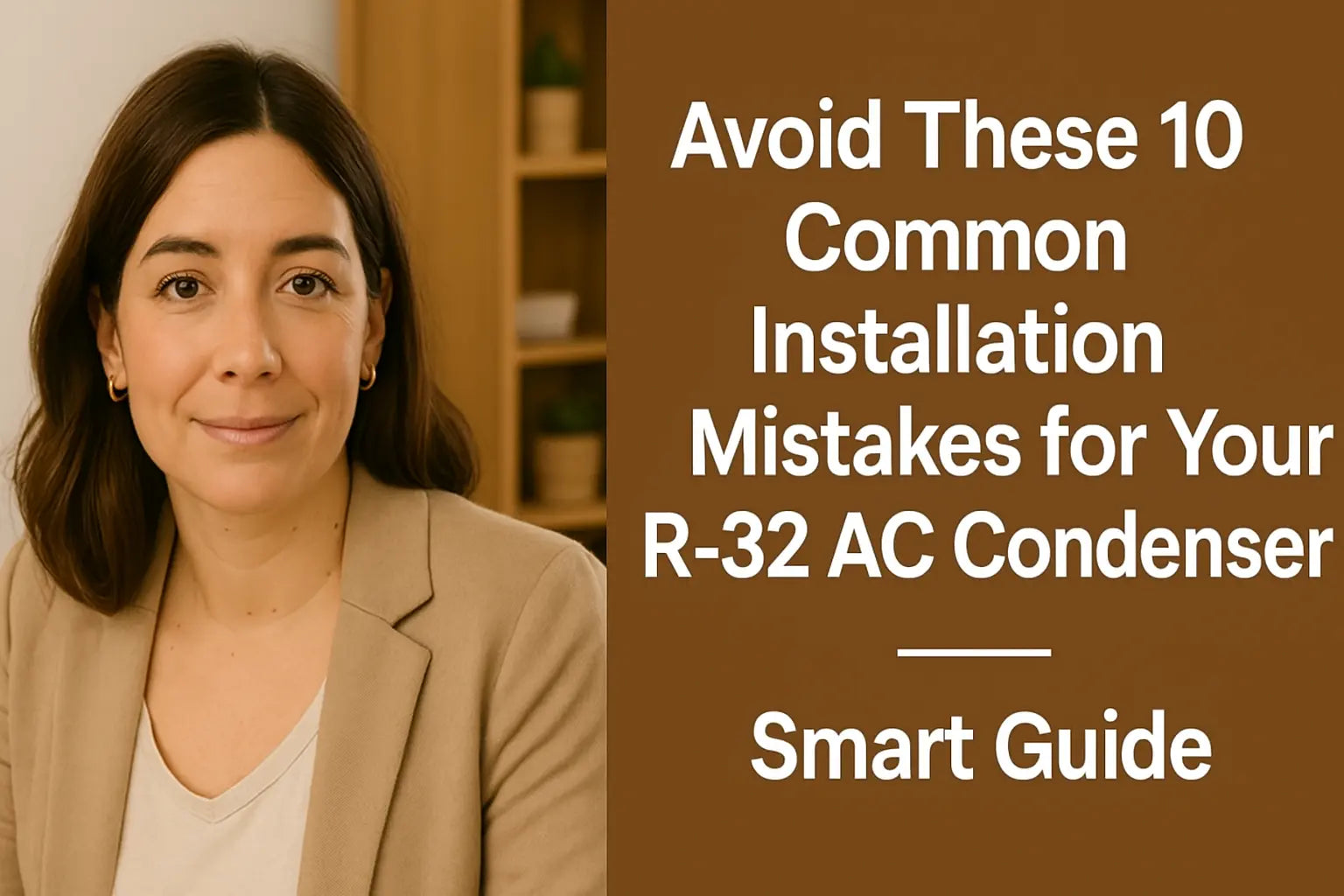Savvy Mavi’s Friendly Heads-Up
Hey savvy shoppers! It’s Mavi here, your friendly neighborhood HVAC enthusiast. If you’re upgrading to an R-32 residential air conditioner condenser, you’re making a smart move for energy efficiency and the environment. But here’s the catch: installing these units properly is crucial to get the performance and savings you deserve.
I can’t stress this enough — even small installation mistakes can lead to big headaches, from poor cooling to costly repairs and even safety risks. The good news? Many of these mistakes are totally avoidable once you know what to look out for.
In this blog, I’m breaking down the top 10 common installation missteps that can trip you up with your R-32 AC condenser. I’ll explain why they matter, how to avoid them, and point you toward trustworthy resources so you can make installation day a breeze. Ready to become an installation insider? Let’s go!
Mistake 1: Skipping the Manufacturer’s Instructions 📋
I get it — installation manuals aren’t the most exciting read, but skipping them can lead to costly problems. Every R-32 condenser model has unique requirements for mounting, refrigerant charge, electrical hookups, and clearances.
Ignoring or rushing through the instructions risks voiding your warranty or damaging the system. Make sure your installer (or you, if DIYing) follows the latest specs.
Mistake 2: Poor Placement of the Outdoor Unit 🌤️
Location is everything! Putting your condenser in a cramped spot, direct sunlight, or near plants and debris will reduce airflow and efficiency.
Your unit needs a stable, level surface with at least 24 inches clearance all around for proper ventilation. Also, avoid locations prone to flooding or water pooling. The Department of Energy’s energy-efficient home design guide has great tips on ideal HVAC placement.
Mistake 3: Incorrect Refrigerant Charging ⚖️
Overcharging or undercharging the system is a huge culprit for underperformance and damage. R-32 requires precise weighing — guessing won’t cut it.
Make sure to use certified charging scales and follow manufacturer specs to the letter. This is why certification is so important for installers working with R-32. The EPA’s Section 608 certification details are essential reading for pros and DIYers alike.
Mistake 4: Failing to Perform Thorough Leak Tests 🔎
Leaks can quietly sap your system’s efficiency and damage the environment by releasing refrigerant. It’s critical to do a full leak check on all joints and connections before charging.
Use electronic leak detectors rated for mildly flammable A2L refrigerants like R-32. The HVACR School provides a thorough explanation of leak testing best practices for R-32.
Mistake 5: Neglecting Electrical Safety and Proper Wiring ⚡
Faulty or sloppy electrical work can cause system failures or worse — fire hazards. Always adhere to local codes and manufacturer wiring diagrams.
If you’re not an electrician, get a licensed pro to handle this step. The ACCA’s website, acca.org, is a great resource for industry electrical standards and safety.
Mistake 6: Using Inadequate Line Set Insulation 🧊
Skipping or skimping on line set insulation leads to condensation, energy loss, and eventual corrosion. Use insulation specifically rated for HVAC outdoor applications, and cover the entire line set from the condenser to the indoor coil.
Mistake 7: Overlooking System Evacuation and Moisture Removal 💧
Air and moisture trapped inside the system are enemies of efficiency and reliability. Proper evacuation with a vacuum pump rated for A2L refrigerants is critical before charging.
Always monitor vacuum levels and hold times as recommended by your condenser manufacturer. This step is often rushed or skipped but can cause costly failures.
Mistake 8: Disregarding Local Codes and Permitting Requirements 🏛️
Skipping permits or ignoring HVAC codes might save time initially but can cause major headaches later — fines, failed inspections, or insurance issues.
Every state and city has rules around refrigerant handling, electrical work, and mechanical installations. Be sure to check with your local building department before starting. The EPA’s guide to refrigerant regulations is a good place to start.
Mistake 9: Installing Without Ensuring Proper Drainage 🚰
Standing water near the condenser pad can lead to rust, mold, and damage. Ensure the site drains well and consider raising the pad slightly if water tends to collect.
After storms or heavy snowmelt, inspect your installation site for water buildup and clear debris.
Mistake 10: Skipping a Professional Post-Installation Tune-Up 🧰
Just because the unit is installed doesn’t mean the job is finished. A professional tune-up after installation helps catch issues like refrigerant imbalances or loose connections early on.
Regular yearly maintenance keeps your system efficient and prolongs its life. The Department of Energy’s AC maintenance checklist is a fantastic resource for homeowners and pros.
Final Thoughts — Savvy Mavi’s Smart Wrap-Up
Installing your R-32 AC condenser is a smart, sustainable choice — but getting it done right is the key to enjoying all its benefits. Avoiding these common installation mistakes will help you save money, avoid headaches, and keep your home cool and comfortable.
If you’re shopping for reliable R-32 condensers or need a trusted installer, I highly recommend checking out The Furnace Outlet’s R-32 collection. They offer great selections and resources to help you get it right from the start.
Want more troubleshooting tips for your R-32 condenser? Visit my guide: DIY Fixes.
Remember, a savvy installation is the foundation of a savvy cooling system. Thanks for spending time with me today — stay cool and confident! ✌️
- Savvy Mavi Out!







